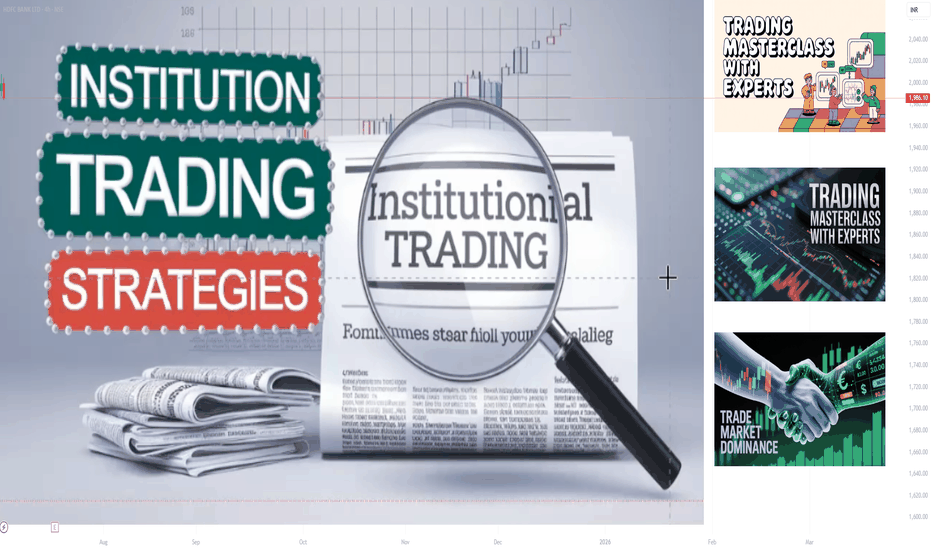Institution Option Trading What Is Trading?
Trading refers to buying and selling financial instruments (stocks, options, futures) in financial markets for profit. It can be:
Retail Trading – Done by individual investors.
Institutional Trading – Conducted by large organizations like banks, mutual funds, hedge funds.
What Is Investing?
Investing involves allocating capital with the expectation of long-term wealth generation. It focuses on:
Value appreciation
Dividends or returns over time
Longer holding periods
Sensex
SENSEX INDEX INTRADAY LEVELS ( EDUCATIONAL PURPOSE) 11/07/2025📉 Sensex Intraday Trade Plan – 11 July (Friday)
🕒 Chart: 5-min/15-min | Trading TF: 1-minute
🔽 Market Context:
Strong downward momentum from 83,800 zone
Lower highs forming; near 83,150 support
Today’s opening crucial — at support or breaking it
🔼 GAP-UP Opening (Above 83,200)
✅ BUY on breakout above 83,220 with volume
🎯 Target 1: 83,280
🎯 Target 2: 83,330
🛑 Stop Loss: 83,180
🔎 Confirmation: Bullish 1-min candle + Volume spike
🔽 GAP-DOWN Opening (Below 83,100)
✅ SELL below 83,080 on breakdown
🎯 Target 1: 83,020
🎯 Target 2: 82,960
🛑 Stop Loss: 83,130
🔎 Don’t short on the first red candle — wait for pullback
🔁 Flat Opening (Between 83,120 – 83,180)
🔄 Range-Bound Strategy
🔁 Buy near 83,120 (Support zone)
🎯 Target: 83,170
🛑 SL: 83,100
🔁 Sell near 83,180–83,200 (Resistance zone)
🎯 Target: 83,130
🛑 SL: 83,230
⚠️ 1-Min Trading Tips
⏱️ Wait for first 5-minute confirmation candle
🔊 Focus on volume near key levels
🚫 Avoid mid-range entries
🔄 Stick to 1:2 Risk:Reward
Institutional Master classOption Trading Basics
Call vs Put Options Detailed
In-the-Money (ITM), At-the-Money (ATM), Out-of-the-Money (OTM)
Options Greeks: Delta, Gamma, Theta, Vega, Rho – controlling price sensitivity.
Understanding Option Premium Breakup
Option Strategies
Single-Leg Strategies: Buying Calls, Buying Puts
Multi-Leg Strategies:
Bull Call Spread
Bear Put Spread
Iron Condor
Straddle and Strangle
Hedging Techniques: How institutions and traders use options to hedge positions.
Option Chain Analysis
Reading Option Chain Data
Open Interest (OI) & Change in OI
IV (Implied Volatility) Impact
PCR (Put-Call Ratio) Analysis for Market Sentiment
Option Trading ClassThe Institutional Trading Process is highly strategic and complex, combining deep research, advanced technology, and strict compliance. Institutions leverage their size and tools to execute efficiently without heavily impacting the market.
Introduction to Option Trading
What are Options?
Options are contracts giving the right, but not the obligation, to buy (Call) or sell (Put) an underlying asset at a predetermined price within a specific time.
Types of Options:
Call Option: Right to buy
Put Option: Right to sell
Key Terms:
Strike Price, Premium, Expiry Date, Lot Size, Intrinsic Value, Time Value
Trading Master ClassPost-Trade Processing
Clearing and Settlement: Trades are cleared by clearing houses and settled typically on T+1 or T+2 basis.
Regulatory Reporting: All trades must be reported for transparency and compliance.
Performance Review and Compliance
Evaluation: Execution quality, cost efficiency, and market impact are reviewed.
Audit Trails: Maintain detailed records for regulatory bodies like SEBI, SEC, etc.
Continuous Improvement: Algorithms and strategies are refined based on trade performance.
Key Components in Institutional Trading
Liquidity Management: Large trades need sufficient liquidity to avoid market disruption.
Algorithmic Support: Automated systems manage trade slicing and timing.
Risk Control: Continuous monitoring of exposure, slippage, and adverse market moves.
Institutional Trading 1. Investment Idea Generation
How it Starts: Analysts, portfolio managers, or quantitative teams identify potential trades based on in-depth research, financial models, or market events.
Key Drivers: Economic indicators, earnings reports, sector performance, geopolitical news, or algorithmic signals.
2. Pre-Trade Analysis and Risk Assessment
Objective: Assess liquidity, volatility, and execution risks.
Tools Used: Option chains, order books, volume profiles, VWAP (Volume Weighted Average Price), and market depth analysis.
Risk Teams: Ensure the trade aligns with the fund’s risk appetite and regulatory requirements.
Option Trading Order Strategy Design
Execution Planning: Institutions cannot place large orders directly; they split trades into smaller lots to avoid price impact.
Techniques:
Algorithmic Trading (TWAP, VWAP, Iceberg orders)
Dark Pool Execution
Block Trades via Brokers
Trade Execution
Methods: Trades are routed through brokers, electronic communication networks (ECNs), or proprietary trading desks.
Real-Time Monitoring: Institutions monitor slippage, transaction costs, and market reaction continuously.
Institutional Trading ProcessInstitutional Trading Process
1. Research and Strategy Development
Extensive quantitative research.
Backtesting models.
Scenario analysis using risk management software.
2. Trade Execution
Executing trades via dark pools to prevent market impact.
Using smart order routers for best price execution.
3. Risk Management
Continuous monitoring of positions.
Real-time adjustments using delta-hedging.
Portfolio diversification to spread risk.
4. Reporting and Compliance
Institutional trades are heavily regulated.
Detailed reporting to regulatory bodies like SEBI, SEC, etc.
Institutional Objectives in Options TradingInstitutional Objectives in Options Trading
1. Hedging
Institutions use options to protect large portfolios from adverse price movements.
Example: A fund holding a large stock position may buy put options as insurance.
2. Speculation
Institutions speculate on short-term market movements with directional bets using options.
Example: Buying call options in anticipation of a stock rally.
3. Arbitrage
Institutions exploit pricing inefficiencies in the options market for risk-free profit.
Example: Engaging in index arbitrage or dividend arbitrage strategies.
4. Income Generation
By selling options, institutions generate consistent premium income.
Example: Writing covered calls on long equity positions.
Tools and Techniques Used by Institutions
1. Advanced Option Strategies
Spreads: Vertical, horizontal, and diagonal spreads to limit risk.
Straddles and Strangles: To profit from high volatility.
Iron Condors and Butterflies: To capture premium in low volatility.
2. Option Greeks Management
Institutional traders rely heavily on managing option Greeks:
Delta: Sensitivity to price changes in the underlying asset.
Gamma: Rate of change of Delta.
Theta: Time decay impact.
Vega: Sensitivity to volatility changes.
Rho: Sensitivity to interest rate changes.
3. Technology and Algorithms
Institutions employ high-frequency trading (HFT) systems and algorithmic strategies to execute options trades efficiently and capitalize on minute price movements.
4. Implied Volatility and Open Interest Analysis
Institutions use implied volatility (IV) and open interest (OI) as key indicators to gauge market sentiment and structure complex multi-leg strategies accordingly.
Institution Option TradingInstitutional options trading refers to the large-scale use of options by financial institutions such as hedge funds, mutual funds, pension funds, banks, insurance companies, and proprietary trading firms. Unlike retail traders, institutional participants possess significant capital, advanced technology, and deep market insight, enabling them to deploy complex options strategies for hedging, speculation, and arbitrage purposes.
Institutional options trading plays a crucial role in shaping market dynamics. These large entities can influence volatility, liquidity, and price movements due to the size and frequency of their trades. Understanding how institutional traders operate provides retail traders with key insights to align their strategies effectively.
The Foundation of Options Trading
1. Understanding Options
Options are derivative contracts that give the buyer the right, but not the obligation, to buy or sell an underlying asset at a predetermined price (strike price) within a specified time frame.
Types of Options:
Call Options: Provide the right to buy.
Put Options: Provide the right to sell.
2. Key Option Terminologies
Premium: Price paid to buy the option.
Strike Price: Predetermined price to buy/sell the underlying asset.
Expiration Date: Last date the option can be exercised.
In-the-Money (ITM): Option with intrinsic value.
Out-of-the-Money (OTM): Option with no intrinsic value.
Technical ClassCandlestick patterns are essential tools in technical analysis that help traders predict potential market movements based on price action. Each candlestick represents four key data points: Open, High, Low, and Close prices within a specific time frame.
Types of Candlestick Patterns:
1. Single Candlestick Patterns
Doji: Market indecision (Open ≈ Close)
Hammer: Bullish reversal, long lower wick
Shooting Star: Bearish reversal, long upper wick
Spinning Top: Market indecision, small body
2. Double Candlestick Patterns
Bullish Engulfing: Strong bullish reversal
Bearish Engulfing: Strong bearish reversal
Tweezer Bottom/Top: Reversal signals
3. Triple Candlestick Patterns
Morning Star: Bullish reversal (3 candles)
Evening Star: Bearish reversal (3 candles)
Three White Soldiers: Strong bullish continuation
Three Black Crows: Strong bearish continuation
✅ Importance in Trading:
Predict Trend Reversals
Identify Continuation Patterns
Spot Market Sentiment Early
Trading with Professionalsnvesting Basics
Investing involves allocating money into assets with the expectation of generating income or profit over time. Unlike trading, investing usually focuses on long-term wealth building.
Investment Vehicles:
Stocks: Equity ownership in companies.
Bonds: Fixed-income securities.
Mutual Funds: Pooled investments managed by professionals.
ETFs: Funds that track indices and can be traded like stocks.
Real Estate: Property investments.
Investment Strategies:
Value Investing: Buying undervalued stocks.
Growth Investing: Investing in companies with high growth potential.
Dividend Investing: Focusing on stocks that provide regular income.
Risk Management in Investing:
Diversification across sectors and asset classes.
Regular portfolio rebalancing.
Long-term focus to absorb short-term volatility
Institutional TradingDivergence Trading
Divergence trading is a technical strategy based on the observation that asset prices and their related indicators (like RSI, MACD, etc.) sometimes move in opposite directions.
Types of Divergence:
Regular Divergence: Predicts potential trend reversals.
Hidden Divergence: Suggests trend continuation.
Tools Used:
Relative Strength Index (RSI)
Moving Average Convergence Divergence (MACD)
Stochastic Oscillator
How Divergence Works:
If prices are making new highs but the indicator isn’t, it signals weakening momentum and a possible reversal.
If prices are making new lows but the indicator isn’t, it could indicate that selling pressure is fading.
Benefits:
Early identification of potential trend changes.
Effective in volatile markets.
Risks:
False signals can occur, leading to premature trade entries.
Master Institutional TradingBenefits of Option Trading:
Leverage with less capital.
Hedging against market risks.
Income generation through premium collection.
Risks of Option Trading:
Complex pricing structures.
Potential for significant losses if not properly managed.
Divergence Trading
Divergence trading is a technical strategy based on the observation that asset prices and their related indicators (like RSI, MACD, etc.) sometimes move in opposite directions.
Institutional Master class
Option Trading Explained
Options are financial derivatives that provide the right, but not the obligation, to buy or sell an underlying asset at a predetermined price within a specific period.
Types of Options:
Call Option: Right to buy the underlying asset.
Put Option: Right to sell the underlying asset.
Components of an Option Contract:
Strike Price: The agreed price to buy/sell.
Premium: Price paid to acquire the option.
Expiration Date: Date when the option contract ends.
Option Trading Strategies:
Buying Calls/Puts: Simple directional bets.
Covered Call: Holding stock while selling a call option to generate income.
Protective Put: Buying a put option to hedge a long stock position.
Spreads: Combining options to limit risk and cost.
Institutional Option TradingStock Market Participants:
Retail Investors: Individual traders and investors.
Institutional Investors: Mutual funds, hedge funds, pension funds, etc.
Market Makers: Provide liquidity by constantly quoting buy and sell prices.
Stock Trading Types:
Delivery Trading: Shares are purchased and held for longer periods.
Intraday Trading: Shares are bought and sold on the same day.
Importance of the Stock Market:
Helps in wealth creation.
Reflects economic health.
Provides investment and diversification opportunities.
Option Trading The stock market is a platform where shares of publicly listed companies are bought and sold. It serves two primary functions: providing companies with capital to grow and giving investors the opportunity to share in the profits of publicly traded companies.
Key Components:
Stocks: Ownership shares in a company.
Stock Exchanges: Platforms like the NYSE, NASDAQ, and BSE where trading occurs.
Indices: Benchmarks like the S&P 500 or Nifty 50 that track the performance of groups of stocks.
Institutional Trading Trading is the act of buying and selling financial instruments like stocks, bonds, currencies, commodities, and derivatives with the goal of making a profit. Traders operate in various markets, including stock markets, forex markets, commodity markets, and cryptocurrency markets. Trading is often contrasted with investing, which is generally focused on long-term wealth accumulation.
There are different types of traders:
Day Traders: Buy and sell securities within the same trading day.
Swing Traders: Hold positions from a few days to several weeks.
Scalp Traders: Execute dozens to hundreds of trades in a day, aiming for small profits.
Position Traders: Hold trades for months or even years, blending trading and investing.
Trading can be driven by technical analysis, fundamental analysis, or a combination of both. Traders use a wide array of tools and strategies to analyze price movements and market trends.
Jio Financial ---- Deep AnalysisJIOFIN -- High Probability Reversal Setup Based on ICT & SMC Concepts
Timeframe - Daily
Projection -- High Probability Reversal Setup expected.
Price Action Overview --
Stock is currently Respecting an internal bullish structure without breaking higher lows.
And stock is currently moving towards High probability POI zone along with --
Order block + FVG is 330-340 levels
Liquidity zone just below the Order block
Liquidity & POI Zone ----
Immediate Liquidity is resting above the levels of 290-300
Imbalance ---
Downside VOlume imbalance between 250-260 levels
below that there is breaker block support zone
RSI ----
Rsi divergence observed at bottom, which shows a bullish move
Rsi showing potential exhaustion or say confluence for reversal after POI is tapped.
Final projection for next 2-3-4 months view -----
Main Target (High Probability) -- Price likely to sweep buy-side liquidity above 300-310
tapping into orderblock + FVG zone 330-340 levels
Expecting strong rejection and sell-off towards Volume imbalance(255) and Breaker block(235)
If main Target Does not go well --- If rejection occures earlier around 300-310 then a partial distribution may trigger
earlier dump into volume imbalance without reaching to Orderblock.
This setup is just reflecting classic Buy-side liquidity grab >>>>> Sell off into imbalance.
Your views or comments are really welcomed. Also just give comments for any confusion or clarification.
#Nifty #Sensex #Jio #Reliance
Institutional Option Trading Part -xTrading Techniques
Block Trading: Large, privately negotiated trades.
High-Frequency Trading (HFT): Using algorithms for rapid-fire trades.
Algorithmic Trading: Automated trading based on predefined criteria.
Technology in Institutional Trading
Low Latency Networks: For speed advantage.
Advanced Algorithms: For market making, arbitrage, and execution.
Data Analytics: Real-time analysis to inform trading decisions.
Market Impact and Regulations
Institutional traders can move markets, prompting regulatory oversight.
Regulatory Bodies:
SEC (U.S.): Securities and Exchange Commission.
FINRA (U.S.): Financial Industry Regulatory Authority.
SEBI (India): Securities and Exchange Board of India.
Key Regulations:
Reporting Requirements: Large trades must be reported.
Fair Trading Practices: Prevent market manipulation.
Risk Controls: Institutions must manage trading risks appropriately.
Institutional TradingInstitutional Investment Process
Setting Objectives: Determining risk tolerance, return targets, and time horizons.
Asset Allocation: Dividing the portfolio among different asset classes.
Security Selection: Choosing individual investments.
Portfolio Monitoring: Continuously reviewing performance and risk.
Institutional Trading
Institutional trading refers to the buying and selling of securities in large volumes by institutions.
Types of Institutional Traders
Proprietary Traders: Trade with the institution's own money.
Agency Traders: Execute trades on behalf of clients.
Program Traders: Use algorithms to trade baskets of stocks.
Trading Venues
Exchanges: NYSE, NASDAQ, etc.
Dark Pools: Private exchanges for large orders.
Over-the-Counter (OTC): Direct trading without an exchange.
Advantages of Institutional Option TradingAdvantages of Institutional Option Trading
Institutional Investing
Institutional investing is the process of managing large-scale investment portfolios with long-term goals.
Investment Objectives
Capital Preservation: Maintaining the value of assets.
Capital Appreciation: Growing the portfolio over time.
Income Generation: Providing steady returns through dividends or interest.
Institutional Option Trading Institutional Option Trading
Institutional option trading involves using options as part of sophisticated strategies to hedge risk, enhance returns, or speculate.
Objectives of Institutional Option Trading
Hedging: Protecting large portfolios against market downturns.
Income Generation: Selling options to collect premiums.
Speculation: Taking directional bets with options.
Arbitrage: Exploiting price inefficiencies across markets.
Common Institutional Option Strategies
Covered Call Writing: Selling call options against stock holdings to generate income.
Protective Puts: Buying puts to insure portfolios against downside risk.
Spreads (Vertical, Horizontal, Diagonal): Limiting risk while aiming for a defined profit range.
Straddles and Strangles: Betting on volatility, regardless of market direction.
Iron Condors: Selling out-of-the-money calls and puts to profit from low volatility.






















